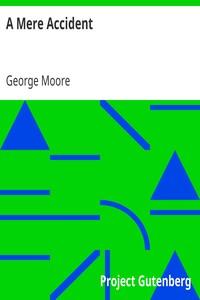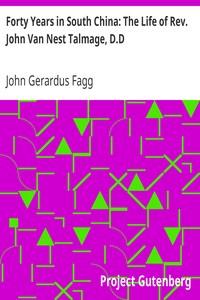|
|
Read this ebook for free! No credit card needed, absolutely nothing to pay.Words: 42850 in 12 pages
This is an ebook sharing website. You can read the uploaded ebooks for free here. No credit cards needed, nothing to pay. If you want to own a digital copy of the ebook, or want to read offline with your favorite ebook-reader, then you can choose to buy and download the ebook.

: Scientific American Supplement No. 586 March 26 1887 by Various - Science Periodicals Scientific American@FreeBooksTue 06 Jun, 2023 The Electro-Magnetic Telephone Transmitter.--New theory of the telephone's action. Gas Engine for Use on Railroads.--The application of six horse power Koerting gas engine to a dummy locomotive.--1 illustration. Tar for Firing Retorts.--Simple arrangement adapted for use in ordinary gas retort benches; results attained.--1 illustration. Western North Carolina Location over the Blue Ridge.--Interesting instance of railroad topography.--1 illustration. Snow Hall--The new science and natural history building of the University of Kansas. Sea-going Torpedo Boats.--The inutility of small torpedo boats at sea.--The construction of larger ones discussed. Notes on Garment Dyeing.--The production of blacks on silk and wool.--Formulas for mordants. THE RETIRO VIADUCT. This viaduct was constructed in the year 1875, according to designs furnished by the author, for the purpose of passing the Dom Pedro Segundo State Railway over the valley which forms the bed of the river Retiro, a small confluent on the left bank of the river Parahybuna. It is 265 kilometers from Rio de Janeiro, and about 10 kilometers from the city of Juiz de Fora, in the province of Minas Geraes, Brazil. It has a curve of 382 meters radius, and a gradient of 1 in 83.3. Its total length is 109 meters ; width between handrails, 4 meters ; and greatest height above the bed of the river, 20 meters . The viaduct is composed of seven semicircular arches, each end arch being built of ashlar masonry, and of 6 meters diameter; five intermediate arches, 15 meters in diameter, are of iron. The four central piers are of iron erected on pillars of ashlar masonry. The metallic part of this viaduct is 80 meters long, and is constructed in the following manner: The arches, and the longitudinal girders which they support, are made of two Barlow rails riveted together, with an iron plate 1/2 inch thick placed between them. The spandrels are formed of uprights and diagonals, the former being made of four angle-irons, and the latter of one angle-iron. Each pair of arches, longitudinal girders and uprights, is transversely 3 meters from center to center, and is connected by cross and diagonal bracing. On the top of the longitudinal girders are fixed cross pieces of single Barlow rails, upon which again are fastened two longitudinals of wood 12 in. square in section, and which in their turn carry the rails of the permanent way. The gauge of the Dom Pedro Segundo Railway is 1.60 meters, or 5 ft. 3 in. nearly, between the rails. At each end of the transverse Barlow rails is fixed the customary simple iron handrail, carried by light cast-iron standards. The iron piers are each formed of four columns, and the columns consist of two Barlow rails, with a slotted iron plate 1/2 inch thick let in between the rails, and the whole being riveted together connects each pair of side columns. The details show the system of cross and diagonal bracing. The columns are each supported by four buttresses formed of plates and angle-irons. These buttresses, fastened with bolts 8 ft. 3 in. long, let into the masonry pillars, secure the stability of the viaduct against lateral strains, due mostly to the centrifugal force caused by the passage of the trains. Free books android app tbrJar TBR JAR Read Free books online gutenberg More posts by @FreeBooks
: Scientific American Supplement No. 460 October 25 1884 by Various - Science Periodicals Scientific American@FreeBooksTue 06 Jun, 2023

: A Mere Accident by Moore George - Courtship Fiction; England Social life and customs 19th century; Man-woman relationships Fiction; Mothers and sons Fiction; Rape victims Fiction@FreeBooksTue 06 Jun, 2023
|
Terms of Use Stock Market News! © gutenberg.org.in2025 All Rights reserved.






